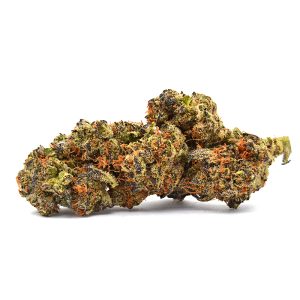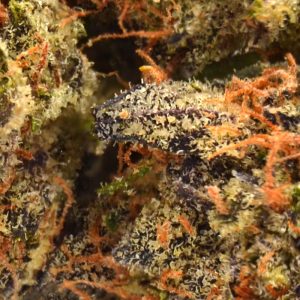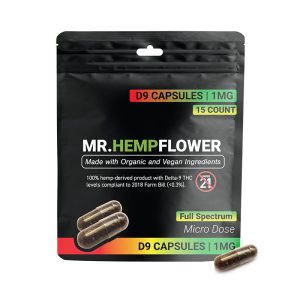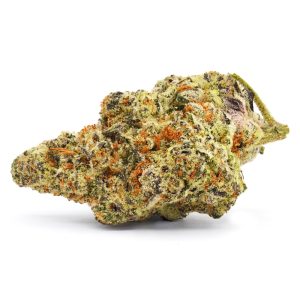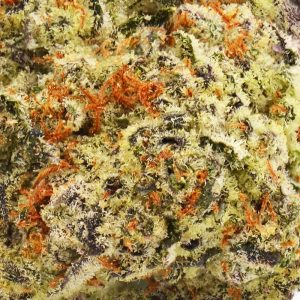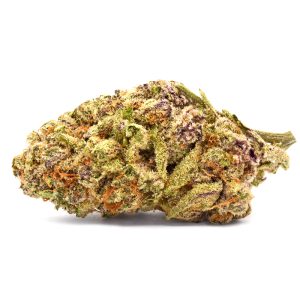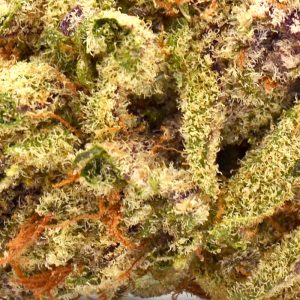Have you ever heard of clinical endocannabinoid deficiency (CED)?
It’s a theory based on the assumption that certain conditions with an unknown cause — like migraine, fibromyalgia, and irritable bowel syndrome — stem from an unbalanced endocannabinoid system (ECS).
Although CED remains a theory, a few studies link the improvement of symptoms in these conditions after endogenous cannabinoid treatment. This article dives into everything we know about CED, including how it manifests, potential causes, and treatment.
What We Know About Clinical Endocannabinoid Deficiency (CED)?
The theory of CED is pretty new and was first explored by Dr. Ethan Russo in 2001 and then more thoroughly in 2004. Although still a theory, CED has been proposed as the potential underlying cause of migraine, irritable bowel syndrome (IBS), and fibromyalgia.
The idea of CED stems from the observation that low endocannabinoid levels may manifest in certain disorders, similar to how many brain disorders are linked to neurotransmitter deficiencies (acetylcholine and Alzheimer, dopamine and Parkinson’s).
Endocannabinoids or endogenous cannabinoids are signaling molecules (neurotransmitters) made on demand by the body’s endocannabinoid system. The two known endocannabinoids are anandamide (also known as the bliss molecule or AEA) and 2-arachidonoylglycerol (short: 2-AG).
These molecules send signals to a specific part of the body to activate the area. Endocannabinoids typically activate endocannabinoid receptors CB1 and CB2, which are found in every region of the body — from the salivary glands to immune cells to the brain’s learning and memory parts.
The endocannabinoid system is in charge of regulating critical bodily processes, including:
- Learning and memory
- Sleep
- Pain control
- Inflammation
- Immune responses
- Digestive system and appetite
- Emotional processing
- Temperature control
So, when the body doesn’t produce enough endocannabinoids, the entire system is affected, potentially resulting in illnesses, often labeled as psychosomatic. To explain the connection between CED and these conditions, let’s look at the case of migraine, fibromyalgia, and irritable bowel syndrome.
CED And Psychosomatic Illnesses
Research shows that other conditions may fall under the CED umbrella, including post-traumatic stress disorder, cystic fibrosis, glaucoma, bipolar disease, phantom limb pain, and more.
But, migraine, IBS, and fibromyalgia offer the greatest evidence for the presence of CED due to expressing common symptomatology, including [1]:
- Psychosomatic nature — migraine, IBS, and fibromyalgia are labeled as psychosomatic illnesses. Psychosomatic disorders are characterized by a subconscious or psychological element because the physical symptoms have no medical explanation. In such cases, medicating the patient is unsustainable in the long run, so cognitive behavioral therapy (CBT) is advised.
- Hyperalgesia — these three conditions manifest lowered pain threshold and don’t present objective laboratory findings.
- Comorbidity — all three diagnoses intertwine in their symptomatology, so there’s a risk of developing another or all of these disorders. For example, fibromyalgia patients suffer from headaches, IBS patients show symptoms that fit into a fibromyalgia diagnosis (and vice versa).
- Anxiety and depression — these diagnoses show an increased prevalence of anxiety and depression.
So, how could a deficiency of endocannabinoids cause IBS or migraine?
Irritable Bowel Syndrome
Affecting 10-15% of the Western world’s population, IBS is the most commonly diagnosed gastrointestinal disorder in the U.S [2].
The cause? Unknown.
Some researchers believe that food poisoning or heavy antibiotic use may lead to the development of IBS, but they haven’t pointed out a single cause.
One theory is that IBS is a result of an exaggerated sensitivity to pain that may come from a broken relationship in signals and processing of those signals between the gut and the brain [3].
IBS can present symptomatology of switching between constant diarrhea and constant constipation. According to a study, IBS patients with diarrhea as the predominant symptom have a genetic variation that affects the endocannabinoid metabolism and is significantly associated with colonic transit time — the time it takes for food to travel from the mouth to the digestive tract to the anus — in these patients [4].
The connection between the ECS and the bowel is strong because the ECS controls the balance of the gut. The CB1 receptors are located in the intestinal epithelia, which is made up of cells that play an essential role in food digestion and nutrient absorption, while the CB2 receptors can be found in intestinal immune cells.
When activated by endocannabinoids, CB receptors located in the intestinal cells could decrease inflammation and influence the transmission of pain.
Migraine
Several studies show the potential connection between endocannabinoids and migraines, but one, in particular, stands out.
A 2006 study found reduced levels of the endocannabinoid anandamide (the bliss molecule) in the cerebrospinal fluid (CSF) of 15 patients with chronic migraine compared to control subjects. The authors hypothesized that patients with migraines might be experiencing a dysfunctional endocannabinoid system [5].
Symptoms of CED: How Does it Manifest?
According to a 2016 report by Dr. Ethan Russo, there are a few symptoms a decreased endocannabinoid function may manifest through, including [1]:
- Hyperalgesia (lowered pain threshold and extreme response to pain)
- Disturbance in the normal functioning of digestion
- Disturbance in mood
- An anxious state of being
- Deranged sleep
These symptoms are vague and can be caused by any condition, including anxiety and chronic stress. Therefore, the CED theory doesn’t exclude the possibility that such symptoms could have a genetic origin or be a result of an injury or a disease that produces similar symptoms.
Also, the endocannabinoid system is in charge of regulating so many processes that uncovering whether CED is the main culprit is nearly impossible.
Several studies point out a few ways to check endocannabinoid levels in the body, including isotope-dilution mass spectrometry. This method checks the ECs levels in the lipid extract of serum or plasma from venous blood.
Although endocannabinoids can be measured in serum and plasma, studies show that the concentrations of AEA are higher in serum than in plasma, while concentrations of 2-AG are more reliably measured in serum. Frozen serum or plasma has stable concentrations of AEA, but this endocannabinoid can also be found in human saliva, hair, semen, amniotic fluid, and breast milk [6].
Can Phytocannabinoid Supplementation Help With CED?
There are a few natural ways to increase endocannabinoids in the body — specifically anandamide. Research shows that the ECS is very sensitive and a gentle nudge in the right direction goes a long way.
One way to increase endocannabinoids without supplementing phytocannabinoids is to slow down the breakdown process of AEA and 2-AG. AEA is broken down by FAAH (fatty acid amide hydrolase), an enzyme that can be inhibited by flavonoids, which are naturally occurring compounds in all plant life. When this process is hindered, the number of ECs will likely increase [7].
That being said, resorting to phytocannabinoids like CBD has been proven beneficial in improving symptoms of disorders where CED might be the cause, including IBS [8].
One study showed that Sativex (cannabis extract containing both THC and CBD) helped patients with neuropathic pain improve the pain and reduce pain scores compared to placebo [9].
In addition to phytocannabinoids, exercise and a healthy diet can considerably boost the endocannabinoid system. Mr. Hemp Flower offers a range of CBD flower and CBD gummy combinations that help people reap the benefits of cannabis without lethargy or anxiety.
But, a few things need to be considered before supplementing the ECS with phytocannabinoids — including the body’s existing EC pool [10].
First, EC deficiency may come from the dysregulation of any number of processes in neurons and cells that contribute to the total levels of ECs. The release of endocannabinoids naturally is a result of activity of primary neurotransmitters like GABA, glutamate, and serotonin.
If these neurotransmitters aren’t being released, the release of endocannabinoids is not triggered as well. When we resort to phytocannabinoids to make up for the lack of endocannabinoids, this may further down-regulate the release of these neurotransmitters and mask the underlying problem.
Cannabinoids are distributed throughout the whole body, so the lack of target specificity and the fact that they can up-regulate and down-regulate different pathways may contribute to causing cannabinoid excess imbalance in another place. The level of endocannabinoids in a healthy individual may depend on whether the person has exercised or eaten recently.
So, finding the root of endocannabinoid deficiency and addressing it is extremely challenging. Currently, there’s no viable option to treat endocannabinoid deficiency in one area without leaving other areas unaffected.
Final Thoughts — What Is Endocannabinoid Deficiency (CED)?
Clinical endocannabinoid deficiency is a theory that a deficiency of ECs in the body leads to an imbalance that triggers conditions like migraine, irritable bowel syndrome, or fibromyalgia. Because these conditions express similar symptoms but have no clear cause, they might be the result of an imbalance in the ECS.
FAQs
What are the symptoms of endocannabinoid deficiency?
Some symptoms of CED include hyperalgesia or a lowered pain threshold, disturbance in mood, sleep, and digestion.
How do you fix the endocannabinoid system?
There are a few things that cause a boost in endocannabinoids, including regular exercise, stress management, and phytocannabinoids like CBD and THC.
Which disorders might be caused by deficiencies in the ECS?
According to studies, clinical endocannabinoid deficiency is associated with migraines, irritable bowel syndrome (IBS), fibromyalgia, and inflammatory and neurologic conditions.
What foods stimulate the endocannabinoid system?
Several foods stimulate the endocannabinoid system including chocolate, hemp seeds, walnuts and eggs.










